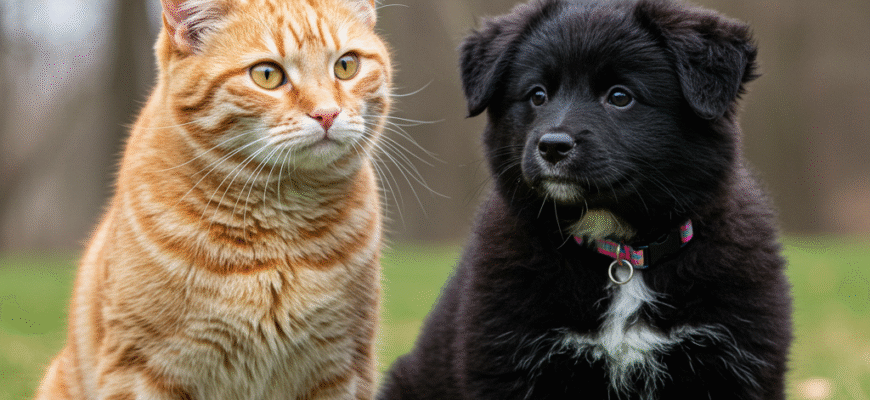Content
Why Laying Down the Ground Rules Matters
Children, especially younger ones, often see pets as living toys. Their natural enthusiasm can translate into actions that pets might find threatening or uncomfortable: sudden movements, loud noises, tight hugs, or grabbing. Animals communicate discomfort differently than humans, often resorting to growling, hissing, nipping, or scratching as warnings when they feel scared or annoyed. Teaching kids safe interaction helps them understand a pet’s boundaries and interpret their signals, significantly reducing the risk of negative encounters. It protects the child from potential harm and ensures the pet feels secure and respected in their presence. This foundation of respect benefits not only the family pet but also prepares children for safe interactions with unfamiliar animals they might meet outside the home.Understanding the Pet’s Perspective
It’s crucial to help children understand that animals have feelings and needs too. Explain that just like people, pets can feel happy, scared, tired, or grumpy. They don’t always want to play or be petted. Emphasize that animals communicate through body language – a wagging tail doesn’t always mean happy (it can indicate anxiety too), and a purring cat isn’t always inviting petting (sometimes they purr when stressed). Helping kids develop empathy for the animal’s experience is a cornerstone of safe interaction. Frame rules not just as restrictions, but as ways to be a good friend to the animal.The Essential ‘Don’ts’ Around Any Animal
Before even teaching the ‘dos’, establishing clear boundaries about what is never acceptable behaviour around pets is vital. These non-negotiables should be taught early and reinforced consistently. Never Pull or Grab: Tails, ears, fur, and whiskers are sensitive. Pulling them hurts and can provoke a defensive reaction. Teach gentle touches only. No Teasing: Waving food without giving it, poking an animal while it’s resting, or deliberately startling it is unkind and unsafe. It erodes trust and can lead to aggression. Avoid Loud Noises and Sudden Movements: Shouting, screaming, or running suddenly towards an animal can frighten it. Encourage calm voices and slow movements, especially when first approaching. Respect Their Stuff and Space: Teach children that food bowls, water dishes, beds, crates, and favourite resting spots are the pet’s safe zones. Never disturb an animal while it is eating, drinking, sleeping, or in its designated safe space. Don’t Try to Ride Pets: Unless it’s a horse under supervised conditions, climbing or attempting to ride dogs or other pets is dangerous for both the child and the animal. Never Corner an Animal: Feeling trapped is terrifying for an animal. Ensure the pet always has an escape route and teach children not to block doorways or back a pet into a corner.Meeting New Animals: The Safe Approach Strategy
Encountering unfamiliar dogs in the park or a friend’s cat requires a specific set of skills. Excitement can make kids rush in, so practising these steps is important.Rule Number One: Ask First, Always!
This is perhaps the most critical rule when meeting any new animal. Teach your child to always ask the owner or the adult in charge, “May I please pet your dog/cat/animal?” Explain that not all animals are friendly towards strangers or children, and the owner knows their pet best. Just because an animal looks cute doesn’t mean it wants to be touched. Respecting the owner’s response, even if it’s a ‘no’, is part of the lesson.Let the Pet Make the First Move
If the owner gives permission, don’t let your child rush towards the animal. Instruct them to stand still or crouch down slightly (avoid towering over small animals) and let the pet approach them first. Encourage the child to offer the back of their hand, held low and still, for the animal to sniff. This is like a polite handshake in the animal world. It allows the pet to gather information and decide if they feel comfortable interacting.Gentle Touches in Safe Zones
Once the pet seems relaxed and shows interest, teach your child where and how to pet gently. Good spots are usually the chest, shoulder, or along the back. Avoid petting the top of the head, face, ears, tail, or paws initially, as these can be sensitive areas for many animals. Demonstrate a gentle stroking motion in the direction the fur grows. Absolutely no poking, slapping, or hugging tightly around the neck, especially with unfamiliar animals.Crucial Reminder: Never leave young children unsupervised with any pet, no matter how familiar or seemingly gentle the animal is. Accidents can happen in seconds. Constant adult supervision is the most effective way to prevent bites or scratches and ensure interactions remain positive and safe for everyone involved.









